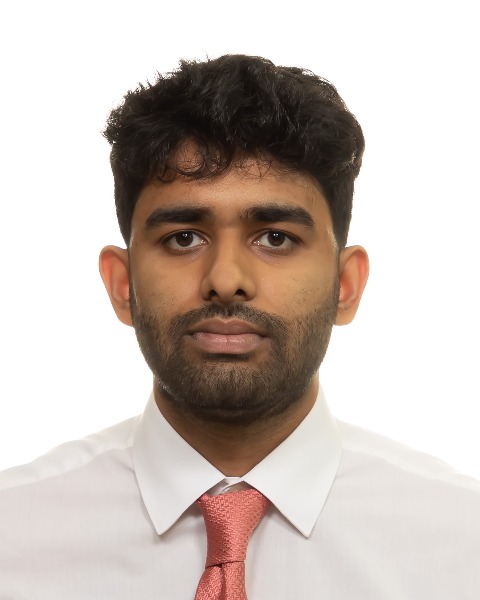Spine
Quantifying the Impact of Postoperative C2 Tilt on Pelvic Tilt Prediction Error After Spinal Deformity Surgery

Karan Joseph, BS
Medical Student
Washington University in St. Louis
Washington University in St. Louis School of Medicine
St Louis, MO, US
Presenting Author(s)
Introduction: Accurate prediction of postoperative Pelvic Tilt (PT) is critical for optimizing sagittal alignment in spinal deformity surgery. Post operative pelvic tilt can be predicted within 4 degrees for 80% of patients using the equation: ΔPT = ΔC2 Pelvic Angle(C2PA) - ΔC2 Tilt (C2T). This equation assumes that postoperative C2T corrects to 0° and thus patients obtain a globally balanced alignment, but deviations from this assumption may introduce significant prediction error. This study aimed to quantify the impact of deviations from ideal C2 Tilt on prediction error and identify predictors of postoperative C2 Tilt.
Methods: A retrospective analysis of spinal deformity patients (n = 117) was conducted. Postoperative C2T and pelvic tilt prediction error were analyzed using multivariate analysis with potential variance predictors including BMI, Psoas Index, age at surgery, sex, and Pre-Op C2T, to confirm the relationship between postoperative C2T and absolute prediction error. Non-linear regression between post-operative C2T and prediction error was performed. A squared analysis of C2T was performed to quantify how much prediction error increases with deviations from 0°.
Results: Multivariate analysis confirmed that postoperative C2T is the strongest predictor of prediction error (p < 0.001). The non-linear, quadratic regression between post-operative C2 Tilt and prediction error was highly predictive (p < 0.001). The squared analysis demonstrated that each squared degree of deviation from 0° C2 Tilt increased prediction error by 0.05° (p < 0.001), equivalent to an increase of approximately 0.22° in prediction error for each degree deviation from 0° C2 Tilt.
Conclusion : For every degree deviation from achieving global sagittal balance, prediction error increases by 0.22°. These findings highlight the importance of achieving neutral C2 tilt to most accurately predict post-operative pelvic tilt and optimize preoperative planning and postoperative radiographic outcomes in spinal deformity surgery.
Methods: A retrospective analysis of spinal deformity patients (n = 117) was conducted. Postoperative C2T and pelvic tilt prediction error were analyzed using multivariate analysis with potential variance predictors including BMI, Psoas Index, age at surgery, sex, and Pre-Op C2T, to confirm the relationship between postoperative C2T and absolute prediction error. Non-linear regression between post-operative C2T and prediction error was performed. A squared analysis of C2T was performed to quantify how much prediction error increases with deviations from 0°.
Results: Multivariate analysis confirmed that postoperative C2T is the strongest predictor of prediction error (p < 0.001). The non-linear, quadratic regression between post-operative C2 Tilt and prediction error was highly predictive (p < 0.001). The squared analysis demonstrated that each squared degree of deviation from 0° C2 Tilt increased prediction error by 0.05° (p < 0.001), equivalent to an increase of approximately 0.22° in prediction error for each degree deviation from 0° C2 Tilt.
Conclusion : For every degree deviation from achieving global sagittal balance, prediction error increases by 0.22°. These findings highlight the importance of achieving neutral C2 tilt to most accurately predict post-operative pelvic tilt and optimize preoperative planning and postoperative radiographic outcomes in spinal deformity surgery.

.jpg)